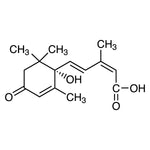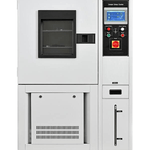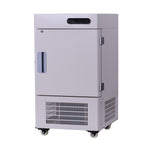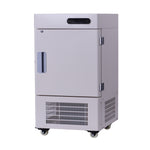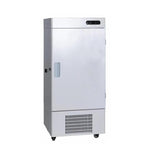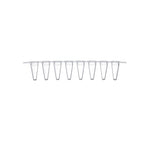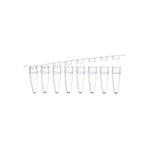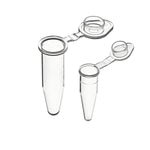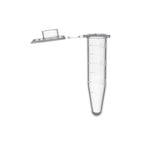You have no items in your shopping cart.
Ever wonder how to calibrate a pipette and guarantee accurate and precise measurements? You are not alone! A pipette is a lab apparatus designed to measure and transfer small volumes of liquid, such as water. Precision and accuracy in a pipette measurement are essential since any inconsistencies in the volume dispensed can influence an experiment's result. For accurate measurements, you must check the pipettes' calibration regularly. The pipette calibration process helps assess whether or not the apparatus is dispensing the correct volumes and perform the necessary repairs if determined inaccurate.
Calibrating a pipette is an effective way to ensure accurate measurements. Ideally, ensuring equipment accuracy is among the vital requirements of proper scientific research. While it might not be the most exhilarating science, we cannot obtain genuinely reliable, trusted, and actionable measurements without accurate calibration.
Analyzing the accuracy of your pipettes is a taxing yet essential part of doing proper research. Conducting your pipette calibration might sound rather challenging, but in this post, we take you through how to perform it in easy, valuable steps. We provide you with a detailed step-by-step guide to follow to make the experience a positively exciting, fast, reliable, and appreciable process accessible for both beginners, professionals, and enthusiastic DIYers.
Let’s get started.
Why Should You Calibrate a Pipette?
Calibrating a pipette is essential and has several advantages to the users, like:
High Measurement Performance
This is arguably the most significant benefit. When pipettes can measure to their highest degree, it boosts the user’s confidence in the apparatus and minimizes the chances of error when measuring. Ideally, high measurement performance promotes reliability, a tremendous advantage for consistent and accurate measurements. Essentially, pipette measurements must always be precise and consistent, and by calibrating your apparatus regularly, you can effectively guarantee this.
Reliability
Regular and accurate pipette calibration ensures that the apparatus' measurements are reliable. With measurements, reliability is as significant as accuracy, meaning that if a measurement isn't reliable, it might not be accurate, a state that can lead to safety concerns, increased downtime, and financial constraints.
Accuracy
All pipette users’ desire accurate measurements. However, frequent maintenance and calibration are essential to ensure precise pipette measurements. Accuracy, just like reliability, is critical for proper measurements and, when compromised, may result in financial concerns, safety risks, and increased downtime.
What You Need for an Accurate Pipette Calibration
Before starting the pipette calibration process, you must collect the following materials essential for the testing procedure:
- Analytical Balance (with at least 0.0001 g readability)
- Clean Beaker
- NIST (Calibrated) Thermometer
- Gloves
- Volumetric Flask
- Distilled Water
- Pipette Tips
- Water (distilled) density chart outlining temperatures
- Notebook/somewhere to note down the measurements
- Calculator or result computing software
After gathering the equipment, you can now move forward to the integral part-calibrating the pipette.
Guide on How to Calibrate a Pipette
If you want to learn how to calibrate a pipette professionally, below are two practical methods to measure and execute accurate pipette calibration.
- The rapid, precise calibration method
- The gravimetric pipette calibration technique
Method 1: Rapid, precise calibration (Best for single-channel pipettes)
Step 1:
The first step to a pipette calibration is to record the model, make, and the serial number of the pipette. Fundamentally, the pipette's model will help determine the minimum and maximum volume setting you should measure in.
Step 2:
Second, you will use your pipette to collect liquid (like water) and place the apparatus on your analytical scale. After placing the pipette gently on the scale, you should then set your scale to 0 and steadily place a pipette tip onto your pipette. Typically, this ensures that your scale is ONLY measuring the liquid.
Step 3:
After placing your pipette on the scale and firmly closing it, you will start to measure the volume settings. Ideally, the calibration test process will usually consist of minimum readings, readings for the mid-point, and the maximum volume setting.
This test will also need you to record the temperature of the liquid you are measuring. Depending on the standard operating procedure you use, the recording process and measurements must be repeated several times (between 5 and 10 times).
Step 4
After you successfully record the volume measurements, you will review them to determine their accuracy. If your pipette fails the calibration test, you will assess it and determine whether it needs re-adjusting or repair. Where the pipette needs more work performed, you will complete the necessary repairs and then re-calibrate after making all the appropriate repairs.
Method 2: The Gravimetric Pipette Calibration Technique
This is the gold standard (ISO approved) method on calibrating a pipette and using a balance to measure inconsistencies in the volumes when determining accurate measurements.
At 20°C temperature and pressure of one atmosphere, water density remains constant at 1 g/mL. Essentially, this means that you can determine water volume by weighing dispensed water.
Nonetheless, barometric pressure and temperature changes can affect the accuracy of your measurements. And while the pressure effect is practically negligible, the temperature is integral. You can use the ‘Z-correction factor’ or the ‘Z-factor’ applied in water volume calculation.
By comparing the theoretical and calculated volumes, you can determine your pipette's accuracy.
Below is a table indicating the distilled water Z-factor at various temperatures:
Step 1: Collect distilled water in a beaker and record its current temperature.
Step 2: Collect the pipette and the exact tips based on the minimum and maximum volumes your pipette can dispense.
Step 3: Take your weight boat and place it on a scale that can weigh in micrograms accurately, and set it to 0 once you close the balance door.
Step 4: Afterwards, pre-rinse the pipette tip by articulating and dispensing the standard volume three times. Push ultimately to dispense any remaining liquid.
Step 5: Articulate the exact calibration volume without bubble formation, then slowly dispense your liquid into your weigh boat. Afterward, note down the weight reflected on the balance and repeat this process between 5 and 10 times.
Step 6: Determine the dispensed volume via this equation: V = W x Z
- W: water weight;
- Z: Z-factor (as outlined in the Table);
- V: calculated dispensed water volume
Step 7: After calculating, determine the mean value from between 5 and 10 trials.
Step 8: Lastly, calculate the pipette’s accuracy via this equation: A = 100 x Vavg/V0
- A: pipette’s accuracy
- Vavg: average volume calculated
- V0: theoretical volume you attempted to dispense.
Step 9: If your accuracy findings fall in the 99-101% range, your pipette can be said to be normal and accurately calibrated
Important Note: You must check your pipette’s calibration using two different volumes
How often should you calibrate your pipette?
Typically, the general recommendation is to check your pipette calibration regularly every 3-6 months.
Calibration labs strictly adhere to these procedures to ensure that the pipettes are calibrated accurately to guarantee precise measurements. Knowing that calibration labs strictly adhere to a professional calibration process gives you confidence that your apparatus will function more accurately and precisely than before.

